
Former Werth's Appliance Center, State Street, Hammond, Indiana, 2000
La fascinación por ahondar en los contrastes urbanos de Camilo José Vergara nace
de su experiencia personal antes que de su interés académico por la
sociología, reconoce el fotógrafo. “Mi padre era de una familia muy rica
que se las arregló para perder todo lo que tenía y a nosotros nos
mantenían los parientes ricos, de modo que, desde pequeño, mi visión fue
que las cosas siempre iban a empeorar”, señala. Esa perspectiva
pesimista se reafirmó en el documentalista cuando llegó a Estados
Unidos. “Visité las capitales del Medio Oeste y me pregunté cómo podía
ser posible que los americanos que habían construido esas ciudades tan
fantásticas, con unos edificios tan perfectos, los hubieran dejado
destruirse”.
Esa inquietud llevó a Vergara a documentar con cámara la evolución de esa decrepitud y, también, en algunos casos, su recuperación y revitalización. “Mi trabajo no consiste en tomar imágenes de cosas bonitas. Yo no creo belleza, yo creo historias”, afirma el documentalista. Como si de un Monet moderno se tratara, Vergara regresa cada año -- y siempre que se lo permite su economía -- con sus lentes ópticas para refotografiar desde el mismo preciso lugar, la misma explanada desierta, el mismo muro, la misma calle para contar sus historias y captar su espíritu.
Camilo José Vergara, el fotógrafo del declive americano: Eva Sais, El País, 10 July 2013

7316 South Broadway, 2014 (via The Guardian, 9 February 2015)

7316 South Broadway, Los Angeles, 2012

7316 South Broadway, Los Angeles, 2012

7316 South Broadway, Los Angeles, 1999

7316 South Broadway, 1996 (via The Guardian, 9 February 2015)

Esa inquietud llevó a Vergara a documentar con cámara la evolución de esa decrepitud y, también, en algunos casos, su recuperación y revitalización. “Mi trabajo no consiste en tomar imágenes de cosas bonitas. Yo no creo belleza, yo creo historias”, afirma el documentalista. Como si de un Monet moderno se tratara, Vergara regresa cada año -- y siempre que se lo permite su economía -- con sus lentes ópticas para refotografiar desde el mismo preciso lugar, la misma explanada desierta, el mismo muro, la misma calle para contar sus historias y captar su espíritu.
Camilo José Vergara, el fotógrafo del declive americano: Eva Sais, El País, 10 July 2013

7316 South Broadway, 2014 (via The Guardian, 9 February 2015)

7316 South Broadway, Los Angeles, 2012

7316 South Broadway, Los Angeles, 2012

7316 South Broadway, Los Angeles, 1999

7316 South Broadway, 1996 (via The Guardian, 9 February 2015)

7316 South Broadway, Los Angeles, 1992
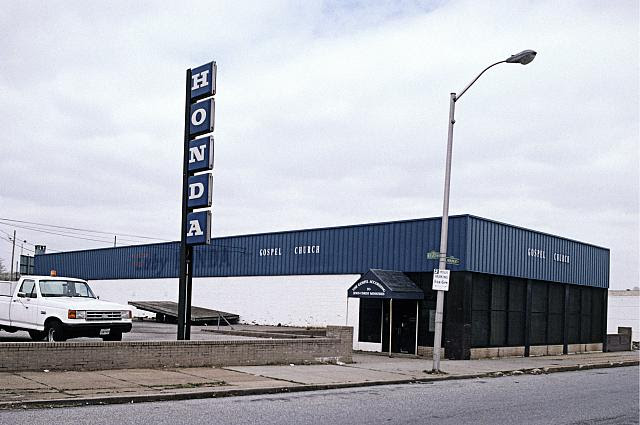
Former Honda dealership turned to Gospel Church According to Jesus Christ, East Monument Ave. at East Ave., Baltimore, 2002

Home of Life Missionary Baptist Church, 4650 West Madison St., Chicago, 2003

True Gospel Church of the Living God, 1855 Third Ave., Richmond, CA, 2004
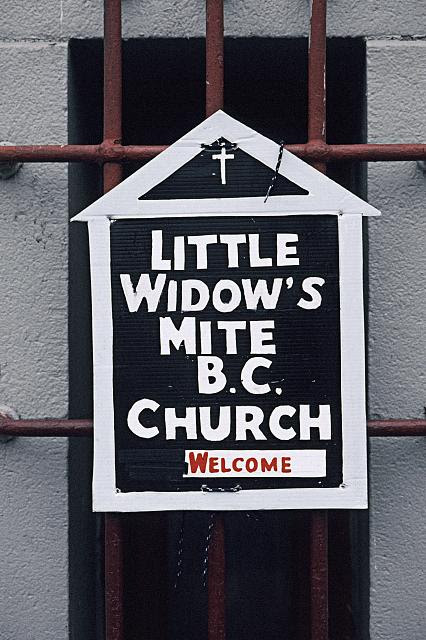
Portable sign to advertise Sunday services, of Little Widow's Mite M. B. Church, placed on the Bronx temple. Seventh Day Adventist Church, where they rent space, Willis Ave. at E. 147th St., Bronx, 2004

29th St. at Thomson St., Philadelphia, 2004

1891 Washingon Ave., Bronx, 2001

San Toribio, Cristero, Nabors Market, Hooper Avenue at 88th St., Los Angeles, 7 April 2013
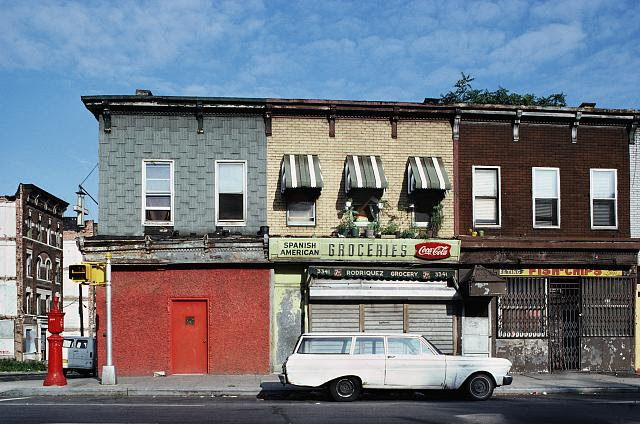
3344 Third Ave., Bronx, 1981
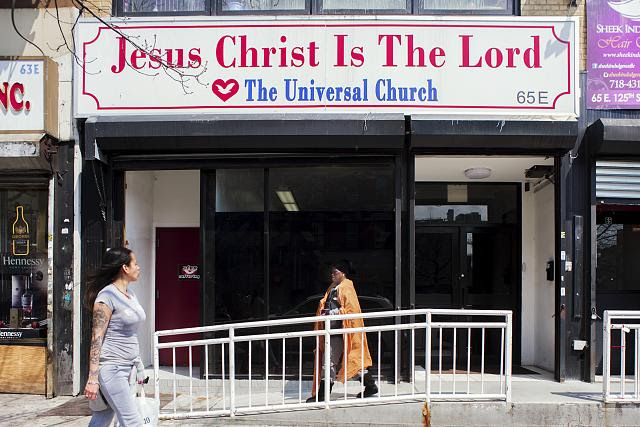
65 East 125th St., Harlem, 2014
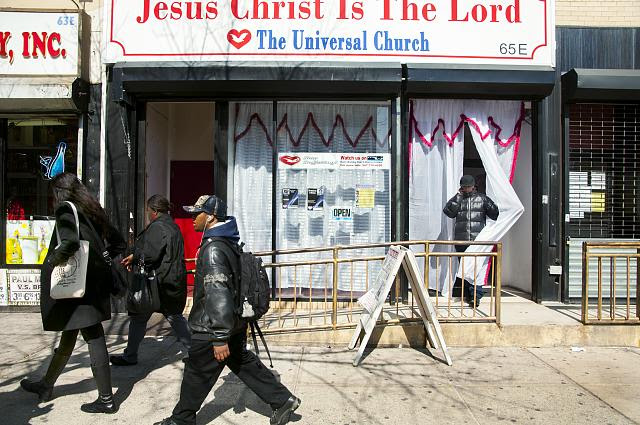
65 East 125th St., Harlem, 2011

65 East 125th St., Harlem, 2009

Christ, Ruben's Body Shop, 4325 S. Avalon Blvd., LA, 2014
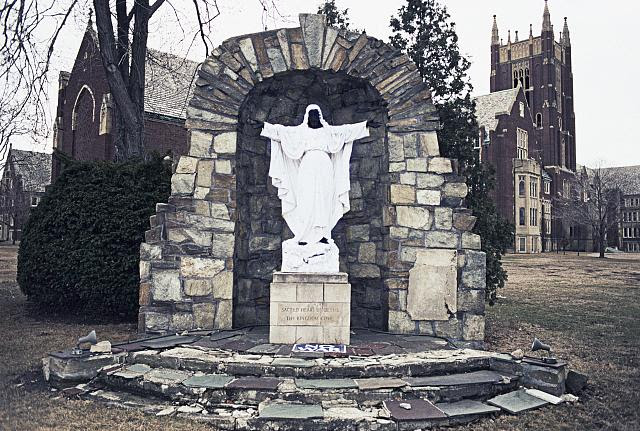
Sacred Heart Seminary, 2701 Chicago Avenue, Detroit, 1994 [2003]
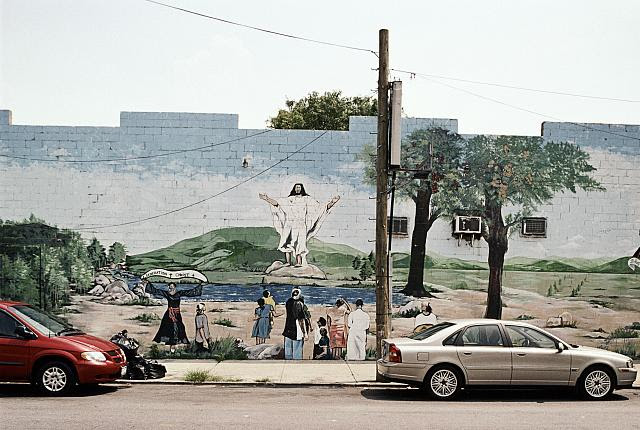
Schaffer St. at Broadway, Brooklyn, 2008

All Nations Spiritual Church, Garfield Blvd. at S. Normal, Chicago, 1992

10828 South Avalon Blvd, Los Angeles, 1980 (via the Guardian, 9 February 2015)

10828 S. Avalon Blvd., Los Angeles, 1980

12107 Kinsman Ave., Cleveland, 2002

1600 N. Bond St., Baltimore, 2002

7123 S. Halsted St., Chicago, 1992
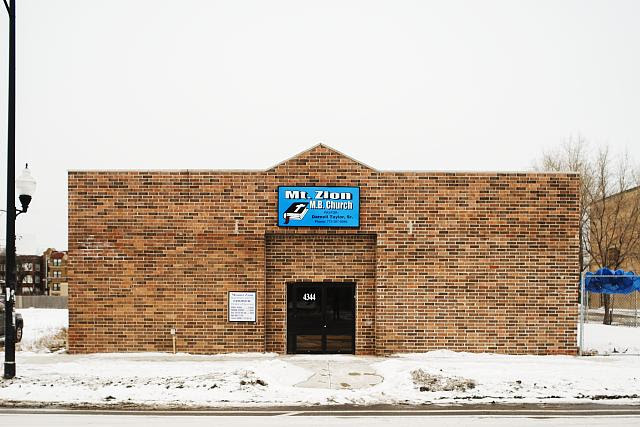
4344 West Madison St., Chicago, 2014

4344 West Madison St., Chicago, 2012 (via Time, 9 July 2013)

4344 West Madison St., Chicago, 2011

4344 West Madison St., Chicago, 2009

4344 West Madison St., Chicago, 2003

4344 West Madison St., Chicago, 2011

4344 West Madison St., Chicago, 2009

4344 West Madison St., Chicago, 2003

4344 West Madison St., Chicago, 1994 (via Time, 9 July 2013

4344 West Madison St., Chicago, 1989

4344 West Madison St., Chicago, 1988

4344 West Madison St., Chicago, 1987
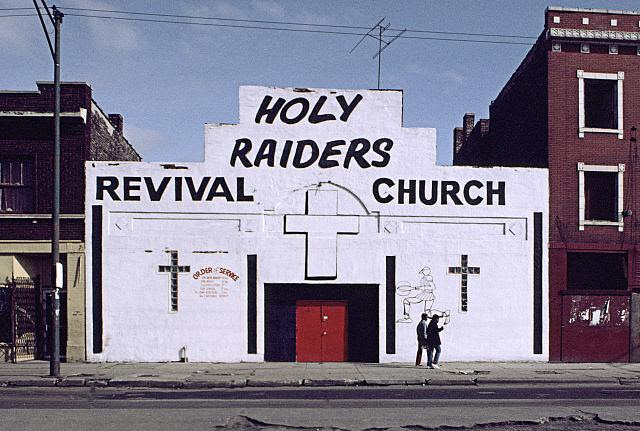
4344 West Madison St., Chicago, 1983

4344 West Madison St., Chicago, 1981 (via Light Box, 9 July 2013)
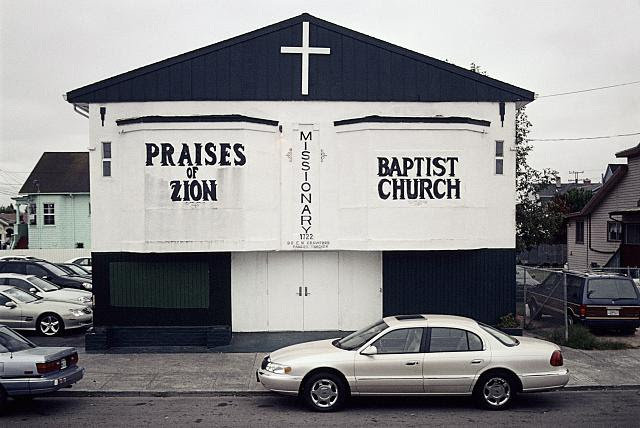
1722 55th St., Oakland, CA, 2006
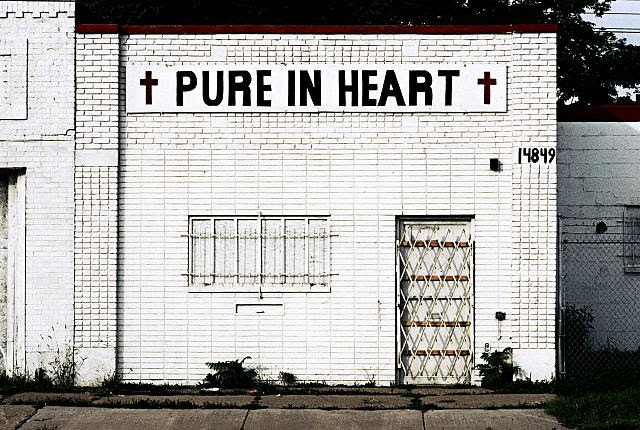
14849 Livernois Ave., Detroit, 2000

6419 S. Crenshaw Blvd., Los Angeles, 1999

1722 55th St., Oakland, CA, 2006

14849 Livernois Ave., Detroit, 2000

6419 S. Crenshaw Blvd., Los Angeles, 1999

3339 Third Ave., South Bronx. 2013
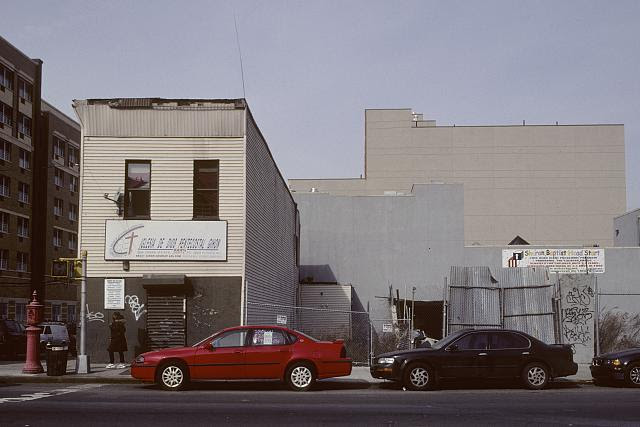
3339 Third Ave., South Bronx. 2009

3339 Third Ave., South Bronx. 2006
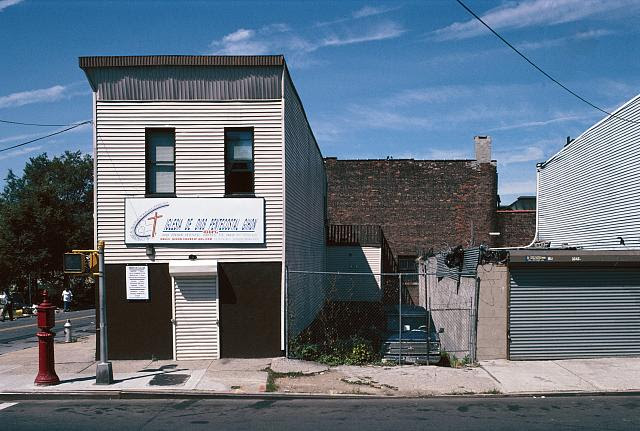
3339 Third Ave., South Bronx. 2003

3339 Third Ave., South Bronx, 1994
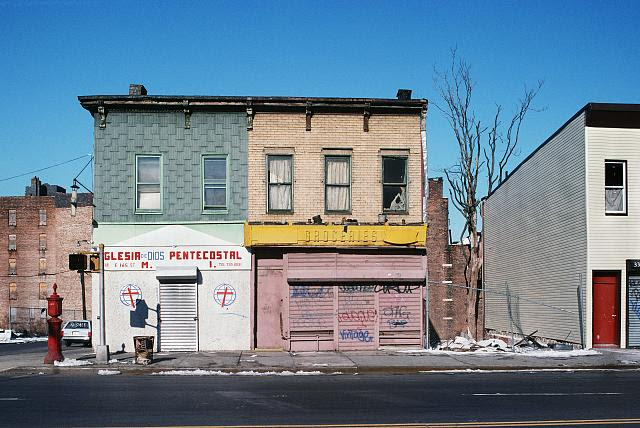
3344 Third Ave., Bronx, 1990

Pierre Gaspar, Street evangelist, St. Nicholas at West 116th St., Harlem, 2008

Street evangelist, SE corner of E. 125th St. at Lexington Ave., Harlem, 2007
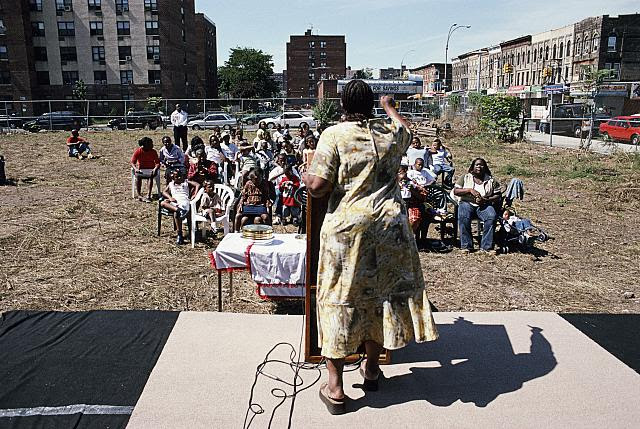
"Satan, you are not longer my Lord." outdoor service of the New Creation Ministry, Sutter Ave., Brooklyn, 2003
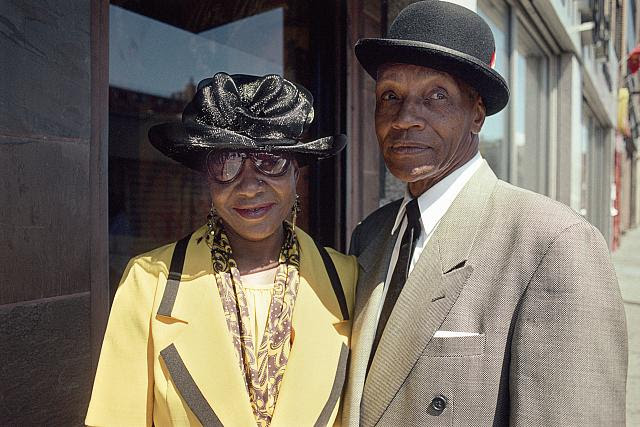
Carrie and Archie, Malcolm X Blvd. at W. 125th St., Harlem, 2007

Baby Dorion outside the New Friendship M. B. Church, Harvey, Il., 2003

Deacon E. M. McGee, New Jerusalem Baptist Church, South Halsted Ave., Chicago, 1998

Pura and Juana singing at Senda de Bendicion, 506 Brook Ave., South Bronx, 2001

House of Blessings, 5440 S. State St., Chicago [between 1970 and 2009]

Anthony Ray, The Greater Temple of Praise, Snediker Ave., Brooklyn, 2002

Rev. Denson, Fellowship M. B. C. Church, 410 East 31st St., Los Angeles, 2002

Sunday service at Saint Martin's Spiritual Church, Utica Ave. at Prospect Pl., Brooklyn, 2002

Gospel Concert, Supernatural Deliverance Revival Tabernacle, 70 First Street, Newark, 2003
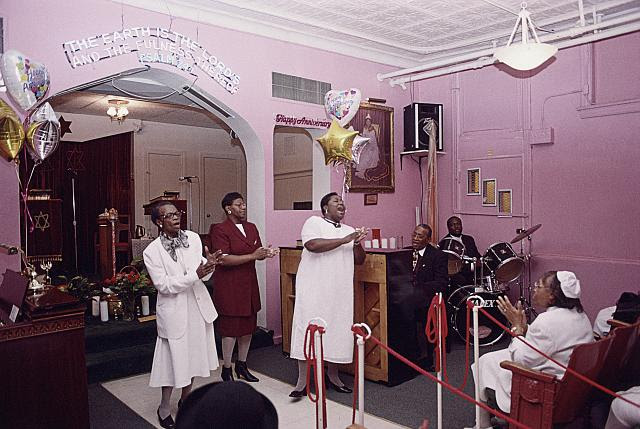
Lilly of the Valley Spiritual Church, singing "I really like my God, I do, I do," 48th Place at S. Princeton Ave., Chicago, 20o2

Charles
on the wheel chair, Daphne wearing blue, Paloma, Hilda, and Nora
sitting at the center, 11165 S. Central Ave., Los Angeles, 2014


9036 South Ashland Ave., Chicago, 12 January 2014

Mt. Lebanon Missionary Baptist Church, South Western Ave. between 96th and 97th Streets, Los Angeles, 2014

Sweet Kingdom Annex, Chene at Superior, Detroit, 21 October 2013

Former Broadway Trust Company, Broadway at Walnut St., Camden, New Jersey, 2003. The large classical building is now the St. James Apostolic Temple. It glows like a survivor from an ancient civilization.
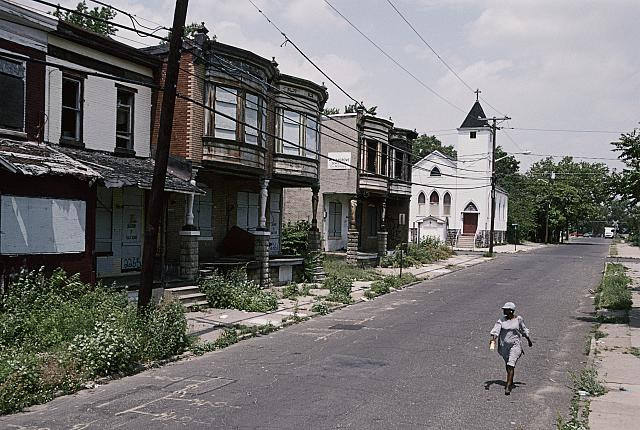
View north along 7th St. towards Florence, Camden, New Jersey, 2005

McClellan at Goethe, Detroit, 3 June 2014. Nativity scene painted on the ruins of an apartment building. Berry, the postman, said, "The neighborhood is being blessed, the area is so bad that they could use a blessing." Kat, the lady that lives across the street hired a sign painter. The Goethe Building erected in 1924, is according to the postman "Not so much the eyesore that used to be" explaining that "The murals on it are about faith".
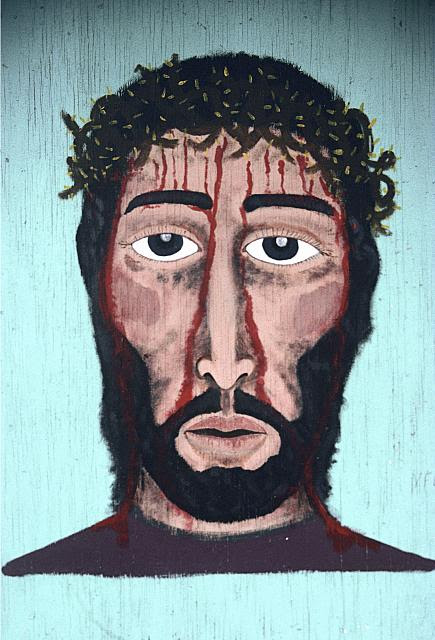
Crossover Inner City Gospel Ministry, Cass Ave. at Temple St., Detroit, 1994

Christ as a body builder; mural by Curtis Lewis, Gratiot, Detroit, 1995

Holy Bethel M. B. Church, Gary, Indiana, 1988
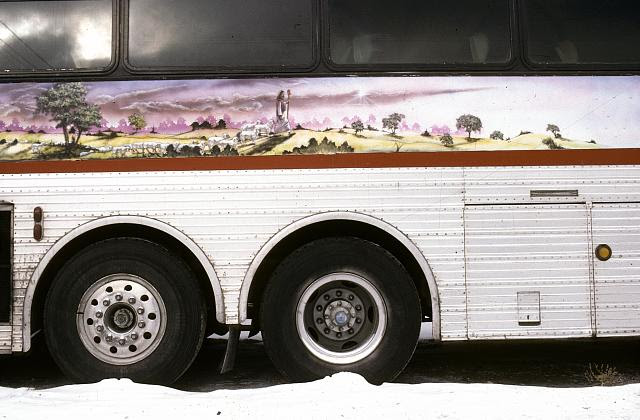
Salem Travellers Bus, Lawndale, Chicago, 1990

Way of Holiness Church, 5258 Indiana Avenue, Chicago, 2003

3029 Wabash Ave., Joy Mart Party Supplies, East Los Angeles, 1997
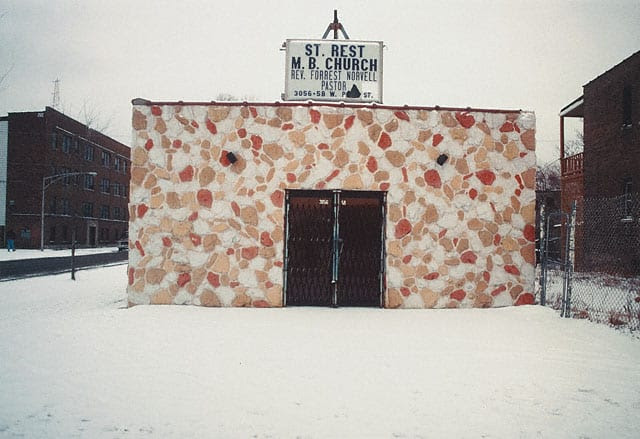
St. Rest M.B. Church, 3056-3058 West Polk St., Chicago [before2005] (from How the Other Half Worships, 2005, via Invincible Cities)

St. Rest M.B. Church, 3056 West Polk St., Chicago, 1980 (from How the Other Half Worships, 2005, via Invincible Cities)

Steadfast Baptist Church, Chicago [before 2005] (from How the Other Half Worships, 2005, via Invincible Cities)

St. Francis of Assisi, View east From Hammond at Buchanan, Detroit, 16 July 2009
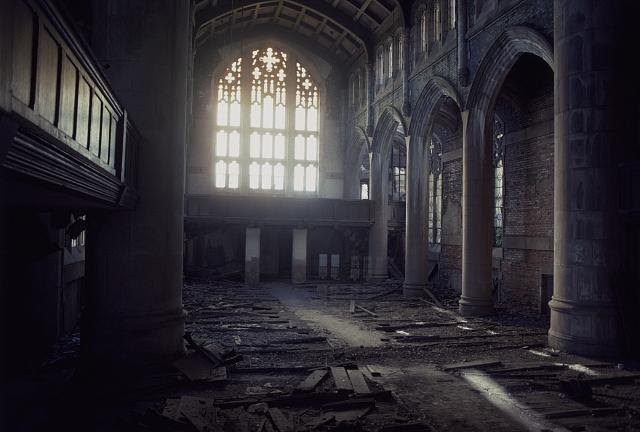
Former City Methodist Church 6th at Washington St., Gary, Indiana, 1998 (2009)

Good Hope Missionary Baptist Church of Detroit, 12051 East Seven Mile Rd. Detroit, Jimmie Jackson Pastor, 2013 (via Light Box, 28 April 2014)

Fellowship for Christ, Hamilton and Tuxedo, Detroit, 2013 (via Light Box, 28 April 2014)

Excellent Praise Word Center with a blue circle where the clock used to be, 8101 Mack Ave., Detroit, 2013 (via Light Box, 28 April 2014)

All photos by Camilo José Vergara (b. Santiago, Chile, 1944) courtesy Camilo J. Vergara Collection, Prints and Photographs Division, Library of Congress
Varieties of Religious Experience: Wild Tchoupitoulas
ReplyDelete"What do you do?" she asked him.
ReplyDelete"I'm a preacher"
The woman looked at him. "What church?"
He said "the Church without Christ"
"Protestant?" she asked suspiciously.
Strange, but you see a lot of similar Church signs in the East End (London). It's only the Africans (Nigerians?) who keep these places open...
Tom, I remember showing a tableeghi (missionary) around once and I took him to a lovely Church (Saint Bartholomew's). I told him: "these Churches are better than our mosques"
"How's that?" he replied.
"Because there are no people in them!"
Can't but help think that religion wouldn't be a half bad thing if it wasn't for the 'religious'
Tom,
ReplyDeleteNo less skeptical about religion, but much more moved by the hand-lettered variations on churches in Camilo José Vergara's beautiful photographs. What would Jesus say about the Baltimore Honda dealership become a church? Thanks for sharing these.
-David
Thank God for photographers like Vergara.
ReplyDeleteinteresante técnica también aplicable al paso de las horas...aunque creo que las iglesias deben ser las que menos evolucionan...(?)
ReplyDeleteMuchas gracias a todos.
ReplyDeleteCamilo José Vergara's monumental forty year project of documenting the disappearing life in America's crumbling cities and neighbourhoods recalls work done a century or more ago by social reformers like Jacob Riis and Lewis Hine. His austere straight-on, squared-up frontal compositions signal a historian, a documentarian, a sociologist at work. And in truth, many of these images will be all that remains of the places seen in them, as the scenes pass further and further out of living memory. Vergara makes no pretense to be an avantgardist or celebrity fashionista. If he has ever snapped a selfie, it is not in his archive.
He returns over and over to haunt streets torn by decay in impoverished neighbourhoods; on his night missions, he has admitted, there is a sense of ambient menace in the ruins of these dying cities. Yet he returns, and returns again, to construct what is in effect a time-lapse image-record of American urban decay, as it grinds on -- and down.
His photos of churches and churchgoers represent perhaps 5% of his archive. For me, they are the heart of his project, for they attempt to capture what is in fact no more than a ghost, a wisp of spirit, a flickering spark of hope lost in great a sea of deprivation, pain and need.
I should add that Vergara has published a half dozen books of his American photos. In a postscript to a collection of his church photos (How the Other Half Worships, Rutgers UP, 2005), he wrote:
ReplyDelete"For four years I had been attending Sunday services, Bible school, choir rehearsals, revivals, and anniversaries in the nation’s poorest urban neighborhoods. I attended services in basements and on the second floor of former factories, places I was able to find only by the noise of rattles and the preaching and the energetic singing that came from inside. I drove nights through desolate streets looking for houses of worship with their lights on. I walked into happy celebrations and graduations. I felt close to strangers as they testified, and observed poor people as they were being fleeced out of their money.
"I search for places where the homeless, the drug addicted, and those recently released from prison go for food, shelter, and clothing, and get those things plus religion. Newcomers are given a grim view of humanity. Hungry and sleepy visitors to the Emmanuel Baptist Rescue Mission in Los Angeles were told: 'It is in the heart of men to do evil,' and are asked to belt out such hymns as 'Send the Light,' and 'What a Friend We Have in Jesus.' A few sheets of toilet paper are handed out to those who need to use the bathroom. After the service people are asked to go, ladies first, gentlemen and with crutches second, and then according to rows to the dining room for breakfast.
"I was often asked to explain my presence and said that I was writing a book on churches. Once asked to speak to the congregation during Sunday services at Saints of God House of Prayer in the Bronx I commented that in 2004, fewer churches were offering Thanksgiving dinner.
"Bishop Craig Hall, the pastor, thinking I had come to service looking for a turkey, offered me money to buy one.
"I met many people who assured me that God had spoken to them. I enjoyed listening to pastors who mixed American practicality with zeal to save souls.
"Among passionate preachers I found many who in their sermons combined their religious views with witty stories about human follies.
"My life will be duller if I stop visiting these churches. I will miss faith healing, speaking in tongues, and meeting people who believe that the spirit of God is in their sanctuaries and who treated me as a friend. I will be curious about new preaching styles and ecclesiastical fashions. I will miss the church buildings, their artifacts, and the food prepared in them. And I am certain that I will find myself humming 'there are souls to rescue, there are souls to spare,' or 'Have thy own way. Have thy own way Lord' when I least expect it.
"How could I hear promises from an 'awesome God' with the power to give eternal life and to eliminate suffering and remain unaffected? In these houses of worship I found an oasis from a world obsessed with celebrity, youth, possessions, and status. If I had felt it in me, I would have repented, become a believer, and perhaps I would have walked with God."
---
By the by, I have come to assume no one looks at the video links I sometimes post, so no one will have wondered about how Fat Tuesday and The Wild Tchoupitoulas found their way into this post, and therefore no one will want to hear my motives. Every keystroke not taken is a gift to the weary bones, in any case. But should anyone care, that wonderful footage from Nola featuring grand musicians who would become much better known in years to come, was shot a long time ago, by another great documentarian, the film-maker Les Blank, who died a little over a year ago.